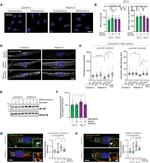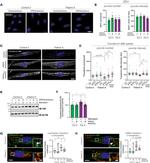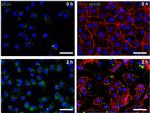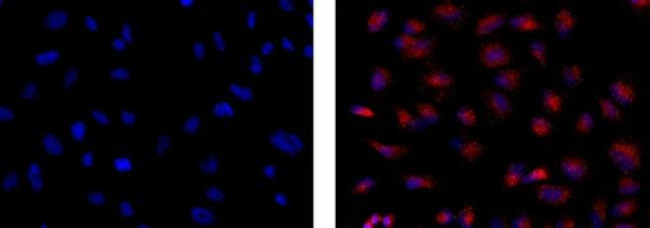Search Thermo Fisher Scientific
Invitrogen
EEA1 Monoclonal Antibody (1G11), eBioscience™
FIGURE: 1 / 6
EEA1 Antibody (14-9114-82) in ICC/IF






Product Details
14-9114-82
Species Reactivity
Published species
Host/Isotype
Class
Type
Clone
Conjugate
Form
Concentration
Purification
Storage buffer
Contains
Storage conditions
Shipping conditions
RRID
Product Specific Information
Description: The monoclonal antibody 1G11 recognizes human, mouse and rat early endosome antigen 1 (EEA1). EEA1 is a hydrophilic peripheral membrane protein found in the cytosol and present on early endosome membranes. EEA1 is a dimer that is localized to early endosomes via a cysteine-rich zinc-finger-like FYVE domain. EEA1 interacts with Rab5-GTP, syntaxin 6 and syntaxin 13 (SNARES). EEA1 is required for endocytic membrane docking and fusion, which allows for the recycling of receptors from the plasma membrane or their delivery to lysosomes for degradation. In neurons, early endosomes are involved in the recycling of neurotransmitter receptors. Autoantibodies to EEA1 have been found in patients with neurological deficits which result in enhanced excitatory synaptic transmission.
Applications Reported: This 1G11 antibody has been reported for use in western blotting, immunohistochemical staining of formalin-fixed paraffin embedded tissue sections, microscopy, ELISA, and immunocytochemistry.
Applications Tested: This 1G11 antibody has been tested by immunocytochemistry of fixed and permeabilized HeLa cells and can be used at less than or equal to 1 µg/mL. It is recommended that the antibody be carefully titrated for optimal performance in the assay of interest.
Purity: Greater than 90%, as determined by SDS-PAGE.
Aggregation: Less than 10%, as determined by HPLC.
Filtration: 0.2 µm post-manufacturing filtered.
Target Information
Early endosomal antigen 1 (EEA1) is a 162 kDa membrane bound protein component specific to the early endosome and is essential for fusion between early endocytic vesicles. Early endosomes are cytoplasmic compartments which fuse with endocytic vesicles for redistribution of extracellular compounds to alternate destinations. Zinc-finger-like domains, reminiscent of those found in nucleic acid binding proteins, are located in the amino and carboxyl-terminal domains of EEA1. The carboxyl-terminal zinc-finger-like-domain is conserved in several other non-nuclear proteins, some of which are also involved in intracellular protein trafficking. In addition, this domain is an authentic zinc-binding domain and is critical to the intracellular localization of EEA1. Membrane association of EEA1 has been shown dependent on phosphatidyl 3-kinase activity, inhibitors of which cause EEA1 to dissociate from early endosomes.
For Research Use Only. Not for use in diagnostic procedures. Not for resale without express authorization.
Bioinformatics
Protein Aliases: Early endosome antigen 1; early endosome antigen 1, 162kD; early endosome-associated protein; Endosome-associated protein p162; Zinc finger FYVE domain-containing protein 2
Gene Aliases: A430109M19Rik; B230358H09Rik; EEA1; MST105; MSTP105; ZFYVE2
UniProt ID: (Human) Q15075, (Mouse) Q8BL66
Entrez Gene ID: (Human) 8411, (Rat) 314764, (Mouse) 216238

Performance Guarantee
If an Invitrogen™ antibody doesn't perform as described on our website or datasheet,we'll replace the product at no cost to you, or provide you with a credit for a future purchase.*
Learn more
We're here to help
Get expert recommendations for common problems or connect directly with an on staff expert for technical assistance related to applications, equipment and general product use.
Contact tech support
